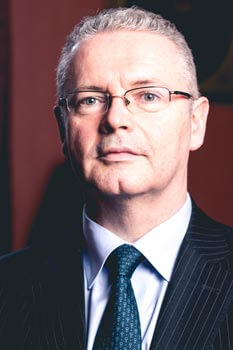The establishment of the Regional Health Authorities was a complex undertaking and the single most critical thing we had to do for the health service, Mr. Leo Kearns CEO, Medical Council and Chair Regional Health Areas Advisory Group, told a HMI East Regional webinar.

He opened by saying his job was to provide advice on the implementation of the RHAs.
Despite the unbelievable work done by so many since the establishment of the HSE, the way the organisation was structured made it unsustainable. Its hierarchical structure mitigated against the ability to provide integrated care at a patient level.
Mr. Kearns said if people were responsible at RHA level or patient service level for pathways of care etc., they must have authority over all the levers that were necessary to deliver on that responsibility. That, of course had to be bounded by national framework standards, procurement laws etc., and there had to be a level of accountability against that responsibility.
The only responsibilities that should be held at the centre were those that required to be held at the centre, for example a national approach to cancer strategy, the models of care for chronic disease management and standards and outcomes generally. “A lot of what we have become accustomed to is to have things centralised and that has to be turned on its head. RHAs in turn must devolve the responsibility, authority and accountability to where service were being delivered. RHAs cannot be allowed to become centralised entities in themselves, they need to pass on the devolution.
If RHAs did not seriously enable a changed way for care delivery across boundaries and professional groupings etc change would not have succeeded. “At present the health system is set up in vertical lines but the patients’ journey is horizontal, as they move from home to the GP, the ED, long term facilities. Our system is set up vertically. RHAs have to change that dynamic. The big challenge is for a joint integrated approach to delivering care to patients and a joined-up way of resourcing, that facilitates this. This change is going to take time. We are talking about changing how budgets are done, service planning, greater focussing on demographics. There is a system not just an organisation involved here. If we want an agile response to service delivery what does that mean for the HSE and contracted organisations? Are they agile enough to support the new structures? If the RHAs are to be successful, where I am concerned, they have to lead to joined-up care experience by patients on the ground.
“When we’re talking about accountability at service level, that has to mean accountability to the community. Accountability goes in multiple directions and one of the key responsibilities for an RHA will be to engage with its population and be seen to be responsible for the services provided. The answer must be seen to be not in Dublin but in the locality. If people were unhappy with the service being provided they didn’t care what was happening elsewhere. It a service was local, it needed to be owned locally. “My advice is to work off local structures and if people see the RHAs can make decisions, it will build up trust with the community. It is vital RHAs make serious decisions and change will have to occur. Their ability to build trust with your community is vital.”
Mr. Kearns said it would seem that it makes sense to utilise existing regional structures but they might need to be modified to meet changed boundaries. There were legal and informal accountabilities.
“We have made it clear that there is a responsibility at national political level to provide coherent leadership across this. There is much stronger sense at national level that there is more political buy-in and understanding of how radical this change needs to be. “
Mr. Kearns said he had made it really clear in his advice that RHAs could not be implemented without radical change in the HSE and the Department of Health. The Department needed to be developing and providing a joined up approach to policy. The Department had a clear role and needed to differentiate themselves from the HSE.
Mr. Tony Canavan, CEO, Saolta Group and HMI President, said that as an organisation, the HSE interacted very closely with the democratic process. As an organisation, the HSE was answerable to the democratic process and that was very important going forward. Locally, there were regional health forums, that were a voice of the people using the services and an opportunity for senior management to be held publicly accountable. He was interested in how this would work out under the RHAs.
Mr. Canavan said a lot of good, for example the development of the cancer services and the hospital groups, had come about in the health services since the formation of the HSE. It was important to ensure that we managed to hold on to what was good at national and regional levels and not lose what had been gained.
Kate Killeen White, Chief Officer, South East Community Healthcare Organisation, said it was a whole system reform and change in how we thought and did business. “We want to deliver integrated joined-up care, but it is about engaging all stakeholders to deliver on that vision.
The meeting was chaired by Mellany McLoone, Chief Officer of Dublin North City and County Community Healthcare Organisation.
Dr Sinead Reynolds, Head of Service, Quality, Safety and Service Improvement, HSE Dublin South, Kildare & West Wicklow Community Services, moderated the queries.
The webinar was sponsored by GSK.

